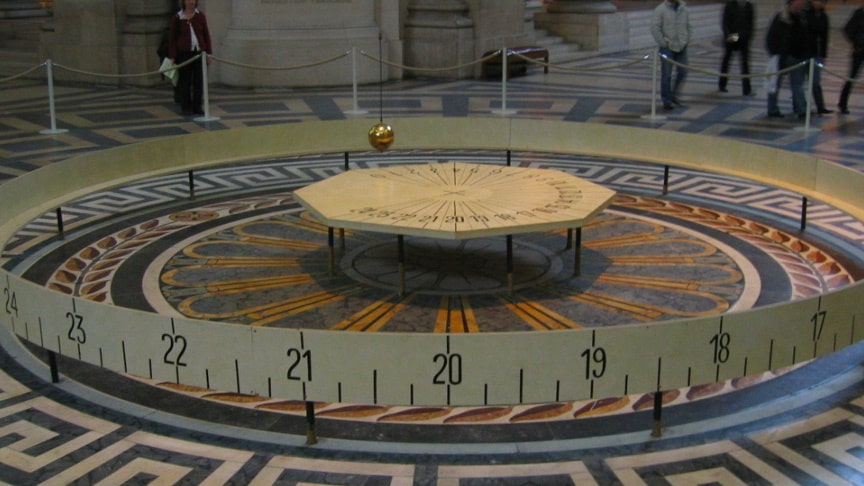The Foucault pendulum or Foucault’s pendulum is a simple device named after French physicist Léon Foucault and conceived as an experiment to demonstrate the Earth’s rotation. The pendulum was introduced in 1851 and was the first experiment to give simple, direct evidence of the Earth’s rotation.
source/image(PrtSc): wikipedia
At either the Geographic North Pole or Geographic South Pole, the plane of oscillation of a pendulum remains fixed relative to the distant masses of the universe while Earth rotates underneath it, taking one sidereal day to complete a rotation.video by: Bradut Florescu
So, relative to Earth, the plane of oscillation of a pendulum at the North Pole – viewed from above – undergoes a full clockwise rotation during one day; a pendulum at the South Pole rotates counterclockwise.
Advertisement
When a Foucault pendulum is suspended at the equator, the plane of oscillation remains fixed relative to Earth. At other latitudes, the plane of oscillation precesses relative to Earth, but more slowly than at the pole.video by: Spanish Fork 17
Using enough wire length, the described circle can be wide enough that the tangential displacement along the measuring circle of between two oscillations can be visible by eye, rendering the Foucault pendulum a spectacular experiment: for example, the original Foucault pendulum in Panthéon moves circularly, with a 6-metre pendulum amplitude, by about 5 mm each period.///wikipedia











